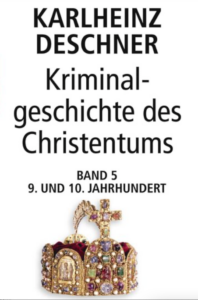Criminal History, 186
For the context of these translations click here.
PDFs of entries 1-183 (abridged translations)
can be accessed in the featured post.
 Death of princes in East and West Franconia
Death of princes in East and West Franconia
From nearby Frankfurt, the terminally ill King Louis III, the victor of Andernach, sent an army against the invaders. But when he died on 20 January 882 ‘for the church and the realm’, as it is said, ‘after a life without gain for himself’ (Annales Bertiniani), his troops, already standing in front of the fortified camp in Elsloo, turned back, pursued by the Normans, who cheered Louis’ death, scorched and burned their way to Koblenz and then turned up the Moselle. On 5 April, ‘on the day of the Most Holy Supper of the Lord’, they attacked Trier, which they plundered and ‘burnt completely, having partly chased away and partly killed the inhabitants’ (Annales Fuldenses). When they marched against Metz, the local bishop Wala ‘fell in battle’ (Regino von Prüm).
In the west, Louis III, the victor of Saucourt, was already on his way to stop further enemy troops in the Loire region, but died on 5 August 882, only about twenty years old (because, as the Annales Vedastini reveal, he allegedly ran into the lintel of a girl on horseback and crashed too hard into the door of her father’s house). Although his brother Carloman continued the battle, with varying success and an enormous payment of 12,000 pounds of silver, he died in December 884, only eighteen years old, in a hunting accident in the forest of Bezu (near Andelys)—not by a boar, as was initially rumoured, but, the annalists assure us, ‘involuntarily’, by a fellow hunter, one of his servants, ‘who wanted to help him’. Both kings were buried in St Denis. Louis II had another son by his second wife Adelheid. However, as this son, the future Charles III the Simple, was still a five-year-old child, the greats of the country hoped for help from Charles III the Fat and invited him to West Franconia.